For everything you need to know about buying and maintaining tires, click here.
Quick, name the top two safety features on your car, truck, or SUV. Chances are good that tires didn't factor high among the answers. But tires are your vehicle's sole connection to the road. You need to know one of the simplest things you can do to take care of them, so they can take care of you: periodic tire rotation.
"Most drivers don't pay attention to their tires," says Matt Edmonds, executive vice president at the Tire Rack, the largest online marketplace for tire sales in the United States. While tires are his business, Edmonds is under no illusion that tire rotation, a vitally important safety check, is going to get pulses racing.
That's because car tires can seem, well, kind of boring. Most drivers tend not to notice them unless they get a flat. Tires don't have the panache of self-driving technology, the excitement of rubber-burning horsepower, or the feel-good factor of automated emergency braking and blind-spot-monitoring systems.
Too bad, because tire rotation is important when it comes to maintaining the performance and safety of your vehicle. Your tires are, quite literally, where the rubber meets the road, as your tires' contact patches with the pavement are in use during every single drive, in all weather conditions. Well-cared-for tires keep you safe.
Tire Rack
Buy Now
Tire Rack
Buy Now
Tire Rack
Buy Now
Tire Rack
Buy Now
Depending on whether the vehicle you're driving is front-, rear-, or all-wheel drive, the tires will wear at different rates. The driven wheels have more work to do and often exhibit quicker rates of wear. A front-wheel-drive car, for example, uses its hard-working front wheels to steer, brake, and put the power down to the pavement (all while carrying the added weight of a front-mounted engine and transaxle).
A front-wheel-drive car, for example, uses its hard-working front wheels to steer, brake, and put the power down to the pavement (all while carrying the added weight of a front-mounted engine and transaxle).
“By rotating your tires, you give the tires a chance to even out their wear and get extended life out of your tires,” Edmonds explains. He recommends having your tires rotated about every 3000 to 5000 miles, or at least every time you go in for an oil change. If your owner's manual states that your car doesn't need new oil that frequently, then plan on a tire rotation at least once every six months.
Rotating your tires evens out the wear and makes them last longer.
Proper rotation not only helps even out wear and extend the life of your tires, it provides the perfect opportunity to make certain all four wheels are in good working order. “As we're coming out of winter and going into spring, it's a good time to inspect the tires' outside and inside shoulder for damage, particularly from potholes,” Edmonds says. It's also a good time to check the condition of your wheel rims, which can be bent by hard impacts with potholes—sometimes only on the inboard side of the rim, where you can't easily see it.
It's also a good time to check the condition of your wheel rims, which can be bent by hard impacts with potholes—sometimes only on the inboard side of the rim, where you can't easily see it.
Two common tire problems that might surface during an inspection include cupping and blistering of the sidewall.
Getty Images
Tire cupping, Edmonds explains, is more common in older vehicles with suspension systems that are aging and in need of repair. This issue presents itself via uneven wear patterns in the tread, which, if ignored, could significantly affect a vehicle's ride, steering, and braking ability while also wearing out tires prematurely.
A blistered sidewall—literally, a bulge in the sidewall—might result from slamming into a deep pothole. "A tear might occur inside the tire when that tire gets pinched. The air could then get into the structure of the tire, and you get a blister," Edmonds says. If unseen or left undiagnosed, this problem could result in a flat tire or a blowout that could cause a serious accident.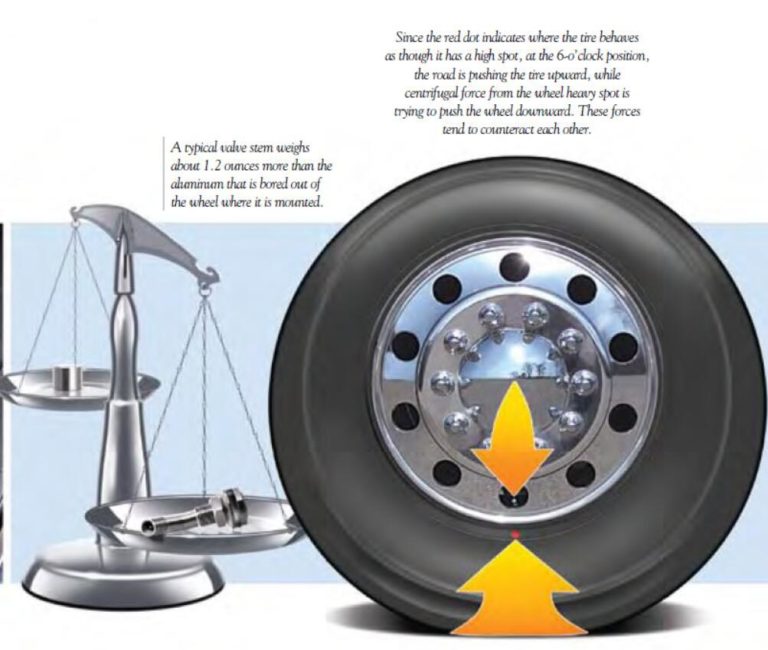 We suffered 10 pothole-related tire failures recently with one of our long-term test cars, a 2017 Jaguar XE, over the course of its 40,000-mile stay, due to Michigan's cratered road surfaces.
We suffered 10 pothole-related tire failures recently with one of our long-term test cars, a 2017 Jaguar XE, over the course of its 40,000-mile stay, due to Michigan's cratered road surfaces.
According to the Tire Industry Association, three tire-rotation patterns cover most of today's vehicles, as long as they are fitted with equal-size tires front and rear and those tires are not unidirectional (meaning they have to rotate in only one direction to function properly).
Rotation pattern for front-drive vehicles: Swap the front tires straight to the rear position on the same side. Take the rear tires and move them to the opposite front corner (e.g., the right rear tire gets moved to the left front).
Getty Images
Rotation pattern for rear-drive vehicles: Move the rear tires straight to the front, then move each front tire to the opposite rear corner (for example, move the right front to the left rear).
Rotation pattern for all-wheel-drive vehicles: Crisscross all four tires (move the right front to the left rear, the left front to the right rear, the left rear to the right front, and the right rear to the left front).
By the way, rugged-looking SUVs may be all the rage, but having a vehicle with all-wheel drive doesn't mean you're immune to tire-rotation maintenance. "That is a common misconception," says Edmonds, regarding the idea that all-wheel-drive vehicles automatically have tires that wear more evenly. "All-wheel-drive systems don't always drive all the wheels all the time," he explains, adding that transfer cases and electronically controlled differentials can shift power between the front and rear wheels, depending on the conditions and the drive mode that's been selected. And a vehicle's inherent weight difference between the front and rear can also affect tire wear.
Extra attention needs to be paid when it comes to vehicles with different wheel sizes at the front and rear and those fitted with unidirectional tires—tires that are designed to rotate in one direction only. In many cases, this setup is used on high-performance vehicles, and tire-rotation patterns need to be adjusted to suit. In fact, some of these staggered-tire packages, as they are called, cannot be rotated unless the tires are dismounted and then remounted on the opposite-side wheels. In some cases it may not be worth the time, money, or trouble to rotate the tires.
In many cases, this setup is used on high-performance vehicles, and tire-rotation patterns need to be adjusted to suit. In fact, some of these staggered-tire packages, as they are called, cannot be rotated unless the tires are dismounted and then remounted on the opposite-side wheels. In some cases it may not be worth the time, money, or trouble to rotate the tires.
If you have any doubts about correct tire rotation, consult the owner's manual, inquire at a dealership, or talk to an expert who is familiar with your vehicle and its tires. But whatever you do, rotate them if possible. At the very least, it'll help your tires last longer and will save you money.
$100 at Home Depot
Now 21% Off
$27 at Amazon
$68 at Amazon
$70 at Amazon
This content is imported from OpenWeb.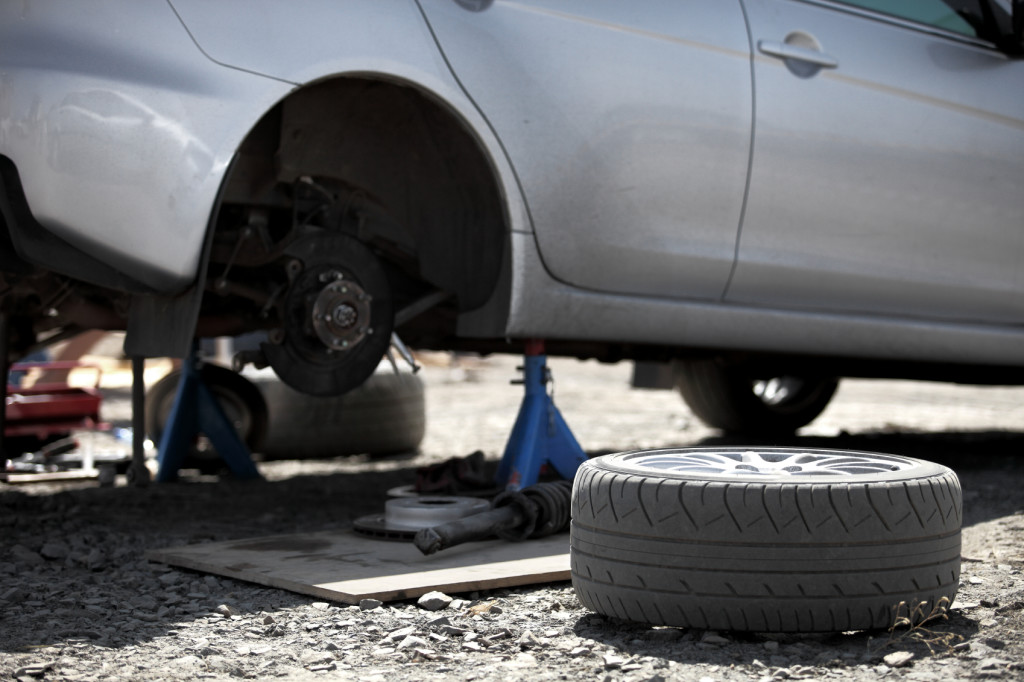 You may be able to find the same content in another format, or you may be able to find more information, at their web site.
You may be able to find the same content in another format, or you may be able to find more information, at their web site.
Tire rotation, that is routinely repositioning your vehicle’s tires in specific patterns from front to back or side to side, is an important element of tire upkeep and safety. Additionally, rotating your tires may also be required to keep your tires covered under warranty. For a quick visual summary of tire rotation, check out our Tread Life episode about tire rotation. Read on for more information about what tire rotation is, why tire rotation patterns matter, and the correct pattern for your vehicle’s needs.
Find Your Bridgestone Service Center
Tire rotation means periodically changing the position of each of the tires on your vehicle. You should rotate your tires as recommended by the vehicle manufacturer, or every 5,000 miles. For many of you, that will mean when you get your vehicle’s oil changed.
Regularly rotating your tires also gives you a good opportunity to visually inspect them for damage, check their air pressure, have them rebalanced if you’re noticing any vibration, and check their tread depth.
There are several reasons why tire rotation is an important element of your standard tire care. First, by routinely rotating your tires, wear is spread evenly across all four tires, and their tread life is maximized. That’s because each specific position on your vehicle requires a different give from each tire—(for example, tires on the front of a front-wheel drive vehicle will take a larger proportion of the torque and friction that’s needed for turning, accelerating and braking)—and can lead to more, or less, wear on the tire. It is especially important to rotate new tires by 5,000 miles because deep, fresh tire tread is more susceptible to uneven wear.
Secondly, even tread wear keeps the tread depth on your tires uniform, which can help keep traction and handling consistent across all four tires.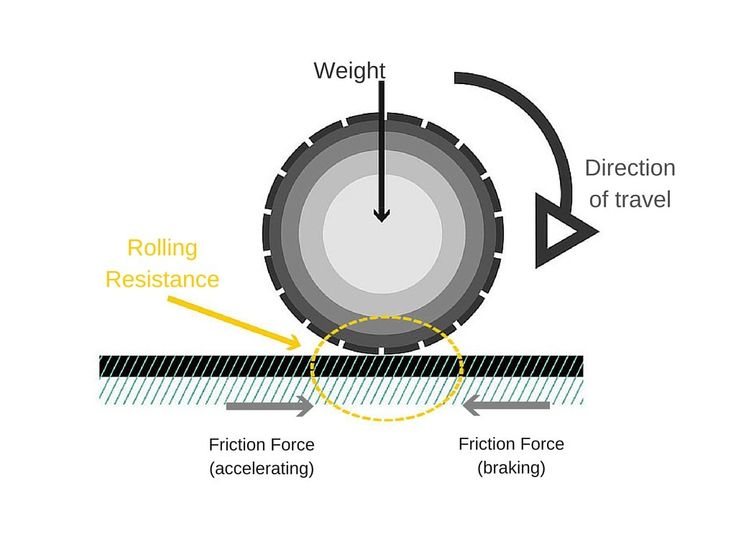 This will improve cornering and braking performance and keep your vehicle safer for driving overall.
This will improve cornering and braking performance and keep your vehicle safer for driving overall.
Finally, if your vehicle has all-wheel-drive, evenly worn tires lower the stresses on the drivetrain, reducing wear on expensive drive components.
For those looking for a luxury tire experience
See Tire Details This Tire Fits Your Vehicle See a map of stores near you where you can buy this tire
See Tires That Fit Does Not Fit Your Vehicle
See if it Fits Not Sure If This Tire Fits
80,000 miles of quiet, comfort and control*
See Tire Details This Tire Fits Your Vehicle See a map of stores near you where you can buy this tire
See Tires That Fit Does Not Fit Your Vehicle
See if it Fits Not Sure If This Tire Fits
Keep your life on a roll
See Tire Details This Tire Fits Your Vehicle See a map of stores near you where you can buy this tire
See Tires That Fit Does Not Fit Your Vehicle
See if it Fits Not Sure If This Tire Fits
All-season tires that won't stop until they get you there
See Tire Details This Tire Fits Your Vehicle See a map of stores near you where you can buy this tire
See Tires That Fit Does Not Fit Your Vehicle
See if it Fits Not Sure If This Tire Fits
Confident all-weather protection
See Tire Details This Tire Fits Your Vehicle See a map of stores near you where you can buy this tire
See Tires That Fit Does Not Fit Your Vehicle
See if it Fits Not Sure If This Tire Fits
Drive more and fill up your tank less*
See Tire Details This Tire Fits Your Vehicle See a map of stores near you where you can buy this tire
See Tires That Fit Does Not Fit Your Vehicle
See if it Fits Not Sure If This Tire Fits
Extended mobility PLUS improved performance through the elements
See Tire Details This Tire Fits Your Vehicle See a map of stores near you where you can buy this tire
See Tires That Fit Does Not Fit Your Vehicle
See if it Fits Not Sure If This Tire Fits
Built for your truck, SUV, or CUV
See Tire Details This Tire Fits Your Vehicle See a map of stores near you where you can buy this tire
See Tires That Fit Does Not Fit Your Vehicle
See if it Fits Not Sure If This Tire Fits
Tough enough to take a puncture*
See Tire Details This Tire Fits Your Vehicle See a map of stores near you where you can buy this tire
See Tires That Fit Does Not Fit Your Vehicle
See if it Fits Not Sure If This Tire Fits
Tires that take you on a thrill ride
See Tire Details This Tire Fits Your Vehicle See a map of stores near you where you can buy this tire
See Tires That Fit Does Not Fit Your Vehicle
See if it Fits Not Sure If This Tire Fits
Ready for heavy-duty hauls
See Tire Details This Tire Fits Your Vehicle See a map of stores near you where you can buy this tire
See Tires That Fit Does Not Fit Your Vehicle
See if it Fits Not Sure If This Tire Fits
High performance driving all year long
See Tire Details This Tire Fits Your Vehicle See a map of stores near you where you can buy this tire
See Tires That Fit Does Not Fit Your Vehicle
See if it Fits Not Sure If This Tire Fits
Handle it all in your high performance CUV or SUV
See Tire Details This Tire Fits Your Vehicle See a map of stores near you where you can buy this tire
See Tires That Fit Does Not Fit Your Vehicle
See if it Fits Not Sure If This Tire Fits
Ready for the long haul
See Tire Details This Tire Fits Your Vehicle See a map of stores near you where you can buy this tire
See Tires That Fit Does Not Fit Your Vehicle
See if it Fits Not Sure If This Tire Fits
Built to keep you and your workload going
See Tire Details This Tire Fits Your Vehicle See a map of stores near you where you can buy this tire
See Tires That Fit Does Not Fit Your Vehicle
See if it Fits Not Sure If This Tire Fits
Built for the demands of commercial highway driving
See Tire Details This Tire Fits Your Vehicle See a map of stores near you where you can buy this tire
See Tires That Fit Does Not Fit Your Vehicle
See if it Fits Not Sure If This Tire Fits
View All Season Tires
For those looking for a luxury tire experience
See Tire Details This Tire Fits Your Vehicle See a map of stores near you where you can buy this tire
See Tires That Fit Does Not Fit Your Vehicle
See if it Fits Not Sure If This Tire Fits
Keep your life on a roll
See Tire Details This Tire Fits Your Vehicle See a map of stores near you where you can buy this tire
See Tires That Fit Does Not Fit Your Vehicle
See if it Fits Not Sure If This Tire Fits
Built for your truck, SUV, or CUV
See Tire Details This Tire Fits Your Vehicle See a map of stores near you where you can buy this tire
See Tires That Fit Does Not Fit Your Vehicle
See if it Fits Not Sure If This Tire Fits
Take on the intensity of on and off road driving
See Tire Details This Tire Fits Your Vehicle See a map of stores near you where you can buy this tire
See Tires That Fit Does Not Fit Your Vehicle
See if it Fits Not Sure If This Tire Fits
Tires that take you on a thrill ride
See Tire Details This Tire Fits Your Vehicle See a map of stores near you where you can buy this tire
See Tires That Fit Does Not Fit Your Vehicle
See if it Fits Not Sure If This Tire Fits
Ready for heavy-duty hauls
See Tire Details This Tire Fits Your Vehicle See a map of stores near you where you can buy this tire
See Tires That Fit Does Not Fit Your Vehicle
See if it Fits Not Sure If This Tire Fits
Handle it all in your high performance CUV or SUV
See Tire Details This Tire Fits Your Vehicle See a map of stores near you where you can buy this tire
See Tires That Fit Does Not Fit Your Vehicle
See if it Fits Not Sure If This Tire Fits
Next level summer performance for your Sport Truck or SUV
See Tire Details This Tire Fits Your Vehicle See a map of stores near you where you can buy this tire
See Tires That Fit Does Not Fit Your Vehicle
See if it Fits Not Sure If This Tire Fits
Ready for the long haul
See Tire Details This Tire Fits Your Vehicle See a map of stores near you where you can buy this tire
See Tires That Fit Does Not Fit Your Vehicle
See if it Fits Not Sure If This Tire Fits
Built to keep you and your workload going
See Tire Details This Tire Fits Your Vehicle See a map of stores near you where you can buy this tire
See Tires That Fit Does Not Fit Your Vehicle
See if it Fits Not Sure If This Tire Fits
Built for the demands of commercial highway driving
See Tire Details This Tire Fits Your Vehicle See a map of stores near you where you can buy this tire
See Tires That Fit Does Not Fit Your Vehicle
See if it Fits Not Sure If This Tire Fits
View All Light/Medium Truck Tires
For winters worst
See Tire Details This Tire Fits Your Vehicle See a map of stores near you where you can buy this tire
See Tires That Fit Does Not Fit Your Vehicle
See if it Fits Not Sure If This Tire Fits
Luxury takes on winter
See Tire Details This Tire Fits Your Vehicle See a map of stores near you where you can buy this tire
See Tires That Fit Does Not Fit Your Vehicle
See if it Fits Not Sure If This Tire Fits
Impressive grip and control
See Tire Details This Tire Fits Your Vehicle See a map of stores near you where you can buy this tire
See Tires That Fit Does Not Fit Your Vehicle
See if it Fits Not Sure If This Tire Fits
Navigate through snow and ice in your SUV, CUV, or truck
See Tire Details This Tire Fits Your Vehicle See a map of stores near you where you can buy this tire
See Tires That Fit Does Not Fit Your Vehicle
See if it Fits Not Sure If This Tire Fits
Built for blizzards and winters worst in a commerical light truck or van
See Tire Details This Tire Fits Your Vehicle See a map of stores near you where you can buy this tire
See Tires That Fit Does Not Fit Your Vehicle
See if it Fits Not Sure If This Tire Fits
Built to get you through this winter
See Tire Details This Tire Fits Your Vehicle See a map of stores near you where you can buy this tire
See Tires That Fit Does Not Fit Your Vehicle
See if it Fits Not Sure If This Tire Fits
Keep your commercial truck or van in commission all winter
See Tire Details This Tire Fits Your Vehicle See a map of stores near you where you can buy this tire
See Tires That Fit Does Not Fit Your Vehicle
See if it Fits Not Sure If This Tire Fits
View All Winter Tires
Take control of the track
See Tire Details This Tire Fits Your Vehicle See a map of stores near you where you can buy this tire
See Tires That Fit Does Not Fit Your Vehicle
See if it Fits Not Sure If This Tire Fits
Sleek, sporty, and cornering performance
See Tire Details This Tire Fits Your Vehicle See a map of stores near you where you can buy this tire
See Tires That Fit Does Not Fit Your Vehicle
See if it Fits Not Sure If This Tire Fits
Take your sports car for a spin
See Tire Details This Tire Fits Your Vehicle See a map of stores near you where you can buy this tire
See Tires That Fit Does Not Fit Your Vehicle
See if it Fits Not Sure If This Tire Fits
Next level summer performance for your Sport Truck or SUV
See Tire Details This Tire Fits Your Vehicle See a map of stores near you where you can buy this tire
See Tires That Fit Does Not Fit Your Vehicle
See if it Fits Not Sure If This Tire Fits
Feel the rush with tires inspired by racing
See Tire Details This Tire Fits Your Vehicle See a map of stores near you where you can buy this tire
See Tires That Fit Does Not Fit Your Vehicle
See if it Fits Not Sure If This Tire Fits
Chase your competitive spirit
See Tire Details This Tire Fits Your Vehicle See a map of stores near you where you can buy this tire
See Tires That Fit Does Not Fit Your Vehicle
See if it Fits Not Sure If This Tire Fits
View All Summer Tires
For those looking for a luxury tire experience
See Tire Details This Tire Fits Your Vehicle See a map of stores near you where you can buy this tire
See Tires That Fit Does Not Fit Your Vehicle
See if it Fits Not Sure If This Tire Fits
80,000 miles of quiet, comfort and control*
See Tire Details This Tire Fits Your Vehicle See a map of stores near you where you can buy this tire
See Tires That Fit Does Not Fit Your Vehicle
See if it Fits Not Sure If This Tire Fits
Keep your life on a roll
See Tire Details This Tire Fits Your Vehicle See a map of stores near you where you can buy this tire
See Tires That Fit Does Not Fit Your Vehicle
See if it Fits Not Sure If This Tire Fits
All-season tires that won't stop until they get you there
See Tire Details This Tire Fits Your Vehicle See a map of stores near you where you can buy this tire
See Tires That Fit Does Not Fit Your Vehicle
See if it Fits Not Sure If This Tire Fits
Confident all-weather protection
See Tire Details This Tire Fits Your Vehicle See a map of stores near you where you can buy this tire
See Tires That Fit Does Not Fit Your Vehicle
See if it Fits Not Sure If This Tire Fits
Drive more and fill up your tank less*
See Tire Details This Tire Fits Your Vehicle See a map of stores near you where you can buy this tire
See Tires That Fit Does Not Fit Your Vehicle
See if it Fits Not Sure If This Tire Fits
Extended mobility PLUS improved performance through the elements
See Tire Details This Tire Fits Your Vehicle See a map of stores near you where you can buy this tire
See Tires That Fit Does Not Fit Your Vehicle
See if it Fits Not Sure If This Tire Fits
Built for your truck, SUV, or CUV
See Tire Details This Tire Fits Your Vehicle See a map of stores near you where you can buy this tire
See Tires That Fit Does Not Fit Your Vehicle
See if it Fits Not Sure If This Tire Fits
Take on the intensity of on and off road driving
See Tire Details This Tire Fits Your Vehicle See a map of stores near you where you can buy this tire
See Tires That Fit Does Not Fit Your Vehicle
See if it Fits Not Sure If This Tire Fits
Tough enough to take a puncture*
See Tire Details This Tire Fits Your Vehicle See a map of stores near you where you can buy this tire
See Tires That Fit Does Not Fit Your Vehicle
See if it Fits Not Sure If This Tire Fits
Tires that take you on a thrill ride
See Tire Details This Tire Fits Your Vehicle See a map of stores near you where you can buy this tire
See Tires That Fit Does Not Fit Your Vehicle
See if it Fits Not Sure If This Tire Fits
Ready for heavy-duty hauls
See Tire Details This Tire Fits Your Vehicle See a map of stores near you where you can buy this tire
See Tires That Fit Does Not Fit Your Vehicle
See if it Fits Not Sure If This Tire Fits
High performance driving all year long
See Tire Details This Tire Fits Your Vehicle See a map of stores near you where you can buy this tire
See Tires That Fit Does Not Fit Your Vehicle
See if it Fits Not Sure If This Tire Fits
Handle it all in your high performance CUV or SUV
See Tire Details This Tire Fits Your Vehicle See a map of stores near you where you can buy this tire
See Tires That Fit Does Not Fit Your Vehicle
See if it Fits Not Sure If This Tire Fits
Take control of the track
See Tire Details This Tire Fits Your Vehicle See a map of stores near you where you can buy this tire
See Tires That Fit Does Not Fit Your Vehicle
See if it Fits Not Sure If This Tire Fits
Sleek, sporty, and cornering performance
See Tire Details This Tire Fits Your Vehicle See a map of stores near you where you can buy this tire
See Tires That Fit Does Not Fit Your Vehicle
See if it Fits Not Sure If This Tire Fits
Take your sports car for a spin
See Tire Details This Tire Fits Your Vehicle See a map of stores near you where you can buy this tire
See Tires That Fit Does Not Fit Your Vehicle
See if it Fits Not Sure If This Tire Fits
Next level summer performance for your Sport Truck or SUV
See Tire Details This Tire Fits Your Vehicle See a map of stores near you where you can buy this tire
See Tires That Fit Does Not Fit Your Vehicle
See if it Fits Not Sure If This Tire Fits
Feel the rush with tires inspired by racing
See Tire Details This Tire Fits Your Vehicle See a map of stores near you where you can buy this tire
See Tires That Fit Does Not Fit Your Vehicle
See if it Fits Not Sure If This Tire Fits
For winters worst
See Tire Details This Tire Fits Your Vehicle See a map of stores near you where you can buy this tire
See Tires That Fit Does Not Fit Your Vehicle
See if it Fits Not Sure If This Tire Fits
Luxury takes on winter
See Tire Details This Tire Fits Your Vehicle See a map of stores near you where you can buy this tire
See Tires That Fit Does Not Fit Your Vehicle
See if it Fits Not Sure If This Tire Fits
Chase your competitive spirit
See Tire Details This Tire Fits Your Vehicle See a map of stores near you where you can buy this tire
See Tires That Fit Does Not Fit Your Vehicle
See if it Fits Not Sure If This Tire Fits
Navigate through snow and ice in your SUV, CUV, or truck
See Tire Details This Tire Fits Your Vehicle See a map of stores near you where you can buy this tire
See Tires That Fit Does Not Fit Your Vehicle
See if it Fits Not Sure If This Tire Fits
Impressive grip and control
See Tire Details This Tire Fits Your Vehicle See a map of stores near you where you can buy this tire
See Tires That Fit Does Not Fit Your Vehicle
See if it Fits Not Sure If This Tire Fits
Ready for the long haul
See Tire Details This Tire Fits Your Vehicle See a map of stores near you where you can buy this tire
See Tires That Fit Does Not Fit Your Vehicle
See if it Fits Not Sure If This Tire Fits
Built to keep you and your workload going
See Tire Details This Tire Fits Your Vehicle See a map of stores near you where you can buy this tire
See Tires That Fit Does Not Fit Your Vehicle
See if it Fits Not Sure If This Tire Fits
Built for blizzards and winters worst in a commerical light truck or van
See Tire Details This Tire Fits Your Vehicle See a map of stores near you where you can buy this tire
See Tires That Fit Does Not Fit Your Vehicle
See if it Fits Not Sure If This Tire Fits
Built for the demands of commercial highway driving
See Tire Details This Tire Fits Your Vehicle See a map of stores near you where you can buy this tire
See Tires That Fit Does Not Fit Your Vehicle
See if it Fits Not Sure If This Tire Fits
Built to get you through this winter
See Tire Details This Tire Fits Your Vehicle See a map of stores near you where you can buy this tire
See Tires That Fit Does Not Fit Your Vehicle
See if it Fits Not Sure If This Tire Fits
Keep your commercial truck or van in commission all winter
See Tire Details This Tire Fits Your Vehicle See a map of stores near you where you can buy this tire
See Tires That Fit Does Not Fit Your Vehicle
See if it Fits Not Sure If This Tire Fits
View DriveGuard Tires
The tire rotation pattern that’s best for your vehicle will depend on the type of tire you’re using, whether your vehicle is front, rear, all, or four-wheel drive, whether your tires are directional or non-directional, whether or not your tires are the same size on the front and rear of your vehicle, and whether you have a full-size spare that can be rotated through as well, unlike a temporary spare.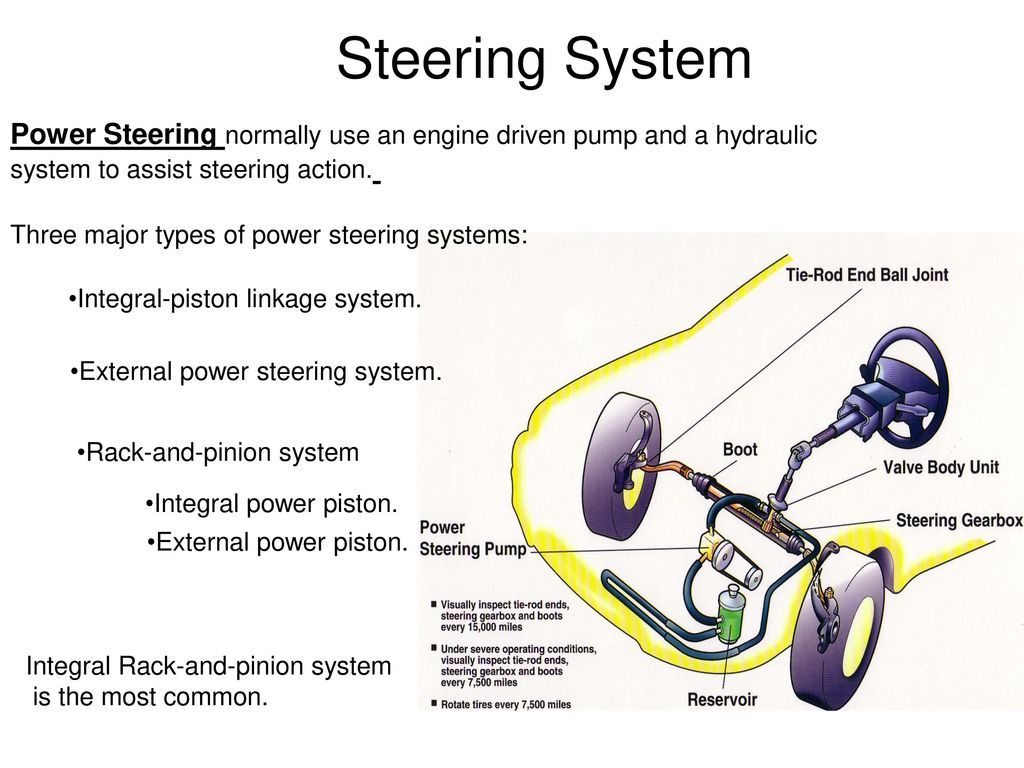 . Let’s take a look at tire rotation patterns recommended by the standardizing body of the tire industry, The Tire and Rim Association, Inc., for all of these possibilities.
. Let’s take a look at tire rotation patterns recommended by the standardizing body of the tire industry, The Tire and Rim Association, Inc., for all of these possibilities.
For vehicles that are 4-wheel, all-wheel, or rear-wheel drive, the rearward cross pattern is recommended. Rear tires are moved to the forward axle and kept on the same side of the vehicle while the front tires are moved to opposite sides of the rear axle.
2. X-PATTERNRecommended for front-wheel drive vehicles such as light-weight trucks and sedans, all tires are moved diagonally, meaning tires are switched from one axle to the opposite as well as being repositioned from one side to the other.
3. FORWARD CROSSThis is the most common pattern for front-wheel drive vehicles. The front axle tires are moved directly back while the rear tires are moved up diagonally to the opposite side of the front axle.
In order to insure that all of the tires on your vehicle have even tread wear, you’ll want to be sure to rotate your full-size spare tire along with the other four. This is especially vital for all-wheel or 4-wheel drive vehicles where even small differences can put undue strain on your car’s drive train.
1. REARWARD CROSS (REAR-WHEEL OR 4-WHEEL DRIVE VEHICLES):Both rear axle tires move directly forward to the front axle while the spare tire moves to the right side of the rear axle. The right front tire moves diagonally back to the left side of the rear axle while the left front tire becomes your new spare tire.
2. FORWARD CROSS (FRONT-WHEEL DRIVE VEHICLES):Rear tires are moved diagonally to opposite sides on the front axle while the right front tire becomes the new spare tire. The spare tire is positioned on the right side of the rear axle while the left tire on the front axle is moved directly back into the left rear position.
All tires are switched with their same-sized partner and remain on the same axle. The two rear tires switch to the opposite side with one another while the two front tires do the same.
2. FRONT-TO-BACK (FOR DIRECTIONAL TIRES)All tires are moved from one axle to the other but remain on the same side of the vehicle. For example, the front left tire is moved to the left side of the rear axle while the rear left tire is repositioned on the left side of the front axle.
Many motorists ask a similar question, but not everyone decides to deviate from the manufacturer's recommendations.
Replacing regular car wheels is one of the simplest types of tuning. Why is this needed? There are many options. The most common reason is not liking the look. Let's say you want the wheels to look spectacular. To do this, the disk must be larger in diameter. Well, or you bought a used car, and the design of the rims absolutely does not suit you. Perhaps you liked some specific wheels, but their dimension is not included in the list recommended by the car manufacturer. You can also change wheels based on practicality. But how can the installation of such wheels turn out in the future? Let's figure it out.
Why is this needed? There are many options. The most common reason is not liking the look. Let's say you want the wheels to look spectacular. To do this, the disk must be larger in diameter. Well, or you bought a used car, and the design of the rims absolutely does not suit you. Perhaps you liked some specific wheels, but their dimension is not included in the list recommended by the car manufacturer. You can also change wheels based on practicality. But how can the installation of such wheels turn out in the future? Let's figure it out.
First, let's remember the key parameters of the wheel.
The main dimensions of the tire: D is the outer diameter of the tire; H is the height of the tire profile; B - tire profile width; d is the diameter of the wheel rim (tire).
The main dimensions of the tire: D is the outer diameter of the tire; H is the height of the tire profile; B - tire profile width; d is the diameter of the wheel rim (tire).
Related materials
The traffic police prescribed requirements for converted cars
Next, we will tell the story on the example of tires for a very common size on B-class cars 185/65 R15. These are the popular Rio, Solaris, Logan, Largus, etc. By the way, let me remind you what all these designations mean.
So, there are several ways to move away from the standard wheel size .
While maintaining the standard size of the rim, we increase the width of the tire profile while maintaining the percentage of height to width. In our example, we get 195/65 R15. It is important to know here that all cars are designed for the installation of snow chains with a size of at least 12 mm. Indeed, in some European countries, driving on mountain roads without chains is prohibited, and not a single self-respecting manufacturer will make a car so that it cannot be operated in the mountains of France or Switzerland.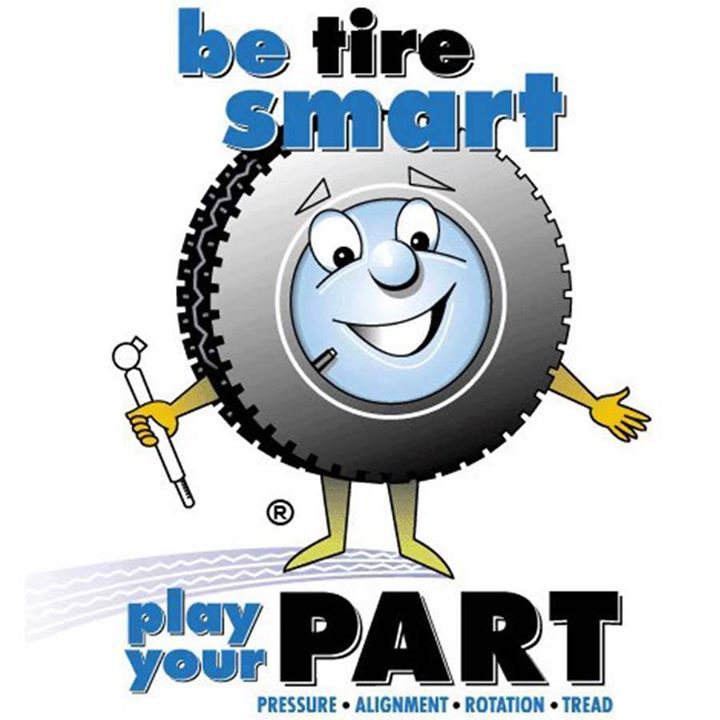 Therefore, an increase in the width of the tire profile is permissible in most cases by up to 24 mm. At the same time, the car will become a little softer on the go, and wider tires will improve braking performance.
Therefore, an increase in the width of the tire profile is permissible in most cases by up to 24 mm. At the same time, the car will become a little softer on the go, and wider tires will improve braking performance.
Related materials
Wheel care: checking wheel and tire products
We leave the rim unchanged, and increase the percentage of tire profile height to width to 70. In our example, we get 185/70 R15. The outer diameter of the wheel increases by 20 mm, which is quite acceptable (remember the reserve for installing chains). Everything would be fine, but in our specific example, the factor intervenes that tires of this dimension are produced mainly for commercial vehicles and they are too rigid and expensive to install on a passenger car. However, in other dimensions, the situation may be different.
The story of a friend's car is quite revealing.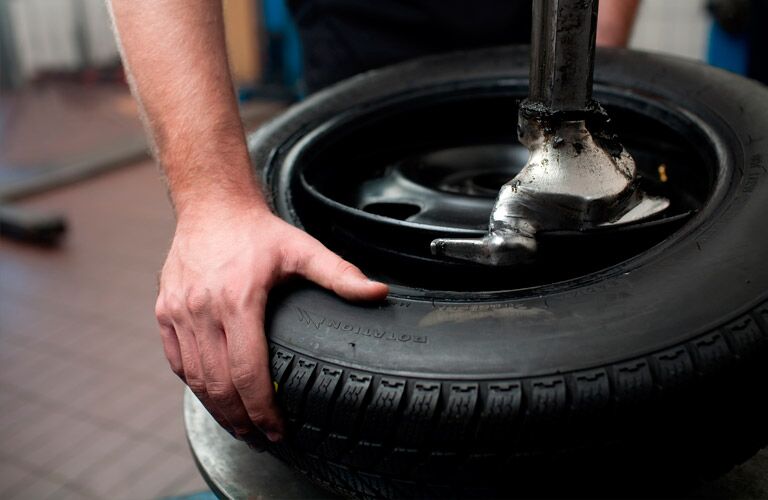 He bought a Kia Rio with a 1.6 engine and a 6-speed automatic. The regular wheels of the car had a size of 185/65 R15. The owner drove through the summer season and was not happy with the rigid suspension of the car and insufficient ground clearance. Then he decided to change the behavior of the car, not by tuning the springs with shock absorbers, but by working with the wheels. In preparation for the next summer season, he used forged wheels with a diameter of 14 inches, which completely matched the mounting dimensions.
He bought a Kia Rio with a 1.6 engine and a 6-speed automatic. The regular wheels of the car had a size of 185/65 R15. The owner drove through the summer season and was not happy with the rigid suspension of the car and insufficient ground clearance. Then he decided to change the behavior of the car, not by tuning the springs with shock absorbers, but by working with the wheels. In preparation for the next summer season, he used forged wheels with a diameter of 14 inches, which completely matched the mounting dimensions.
The previous generation Kia Rio was equipped with 15-inch wheels in the base, but to make the car softer, the owner installed 14-inch wheels with 195/70 R14 tires.
Kia Rio of the previous generation was equipped with 15-inch wheels in the base, but to make the car softer, the owner installed 14-inch wheels with 195/70 R14 tires.
Related materials
Tire test "Behind the wheel" - we measure the braking distance in heat and cold
There is noticeably more air between the rim and tire.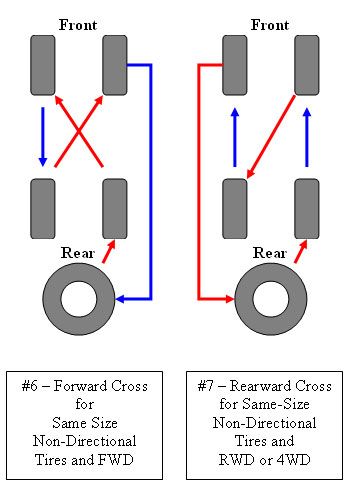 The outer diameter of the wheel has also grown (by 9 mm). As a result, the smoothness of the ride has become fantastic. When overcoming road roughness, the car, which was not originally famous for its energy-intensive suspension, began to resemble cars of the log-shaped family, which are super-comfortable on Russian roads. Soft, quiet, smooth. All the problems of the dead Russian roads and the rigid Korean suspension have disappeared. He does not plan to drive, so he does not care about the possible deterioration in road holding at very high speeds.
The outer diameter of the wheel has also grown (by 9 mm). As a result, the smoothness of the ride has become fantastic. When overcoming road roughness, the car, which was not originally famous for its energy-intensive suspension, began to resemble cars of the log-shaped family, which are super-comfortable on Russian roads. Soft, quiet, smooth. All the problems of the dead Russian roads and the rigid Korean suspension have disappeared. He does not plan to drive, so he does not care about the possible deterioration in road holding at very high speeds.
However, disc diameter reduction is very rare. Much more often it happens that the owner chooses discs one or even two sizes larger. And "wraps" them in low-profile tires. At the same time, the overall dimensions of the wheel remain almost unchanged or grow within acceptable limits.
A typical low profile tire.
A typical example of a low profile tyre.
Related materials
Tire pressure: your norm
Looks spectacular, but first of all, smoothness suffers. Yes, and there are much more chances to damage a wheel on a bad road, because the lower the height of the tire profile, the less the ability of such a tire to withstand shock loads. In everything you need to know the measure. Returning to our example, Rio and Solaris cars in expensive trim levels sport 16-inch wheels with 195/55 R16 tires. In this case, you can play a little with the sizes. For example, a 195/60 R16 tire will fit in the wheel well without any problems, since its outer diameter will increase by only 19mm. The clearance will grow by a decent 9.5 mm, but you can forget about the softness of the ride provided by the 15-inch wheels of the basic modification.
Another story when the owner of the car decides to install wider disks.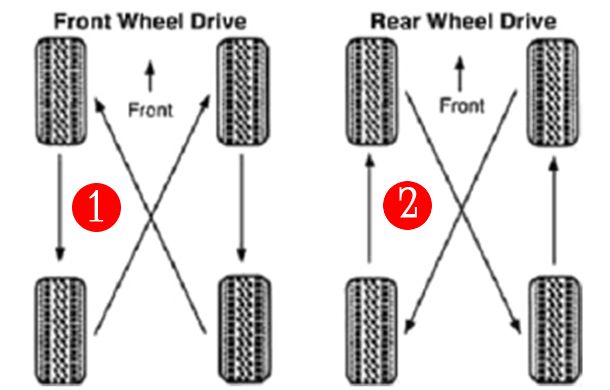 Some people like it when the wheel protrudes a little beyond the arch. Please note that changing the dimensions of the wheel and tire can significantly increase the mass of the wheel assembly. Such weighting will negatively affect the life of the suspension elements and even the body, since large unsprung masses can cause resonant vibrations for which the suspension is not structurally designed. It is also important to remember such a parameter as wheel offset.
Some people like it when the wheel protrudes a little beyond the arch. Please note that changing the dimensions of the wheel and tire can significantly increase the mass of the wheel assembly. Such weighting will negatively affect the life of the suspension elements and even the body, since large unsprung masses can cause resonant vibrations for which the suspension is not structurally designed. It is also important to remember such a parameter as wheel offset.
Wheel offset is the distance between the plane of symmetry of the rim and the surface adjacent to the vehicle hub. From left to right in the diagram are shown: negative overhang, zero overhang and positive overhang.
Wheel offset is the distance between the plane of symmetry of the rim and the surface adjacent to the vehicle hub. From left to right in the diagram are shown: negative overhang, zero overhang and positive overhang.
Those who like to change the offset of the rims, as a rule, tend to place the wheels wider. The aesthetic component of such changes is controversial, but the resource of the suspension elements will certainly decrease.
The aesthetic component of such changes is controversial, but the resource of the suspension elements will certainly decrease.
| It is, of course, possible to pull narrow and inexpensive tires onto rims that look more like solid pipe sections with flanges, but the deformation of the tire carcass will soon render it unusable. You don't run into many of these. Of course, it is possible to pull narrow and inexpensive tires onto rims that look more like solid sections of pipes with flanges, but the deformation of the tire carcass will soon render it unusable. You don't run into many of these. | Even large crossovers, which, in comparison with sedans, seem to be a sort of bumpkins, when you install low-profile tires, they begin to manage at least “good”. Even large crossovers, which in comparison with sedans seem to be a sort of bumpkins, when you install low-profile tires, they begin to manage at least "good". | On the utility Sobol, a tuning enthusiast installed discs that significantly increased the track. Curious looks from others are guaranteed, as well as a reduced life of wheel bearings and shock absorbers. On the utilitarian Sobol, a tuning enthusiast installed discs that significantly increased the track. Curious looks from others are guaranteed, as well as a reduced life of wheel bearings and shock absorbers. The wheel may touch body parts. If the width and diameter of the wheel grow no more than 24 mm from the maximum wheel size recommended by the manufacturer, then this problem is not terrible for you. Only after that you can’t put chains. |
| Economy improvement. Economy improves slightly on country roads, especially on vehicles with gearboxes that have few gears (4 or 5). | Vehicle roll increase. Yes, the roll will increase slightly, due to the fact that the center of mass is now slightly higher. | |
| Change the speedometer and odometer. Standard instruments always overestimate the readings. You can check by GPS. And with new, slightly larger wheels, the readings will come in line with reality. Plus or minus you decide. Still, such a discrepancy is made primarily for security reasons. We are for accurate instrument readings. | Derating. The new wheels are a little harder for the engine to turn, and they themselves are a little heavier. | |
| Reducing the offset of the discs (when the wheels protrude more out of the wheel arches) provides a wider track, which improves the lateral stability of the machine . | The wide disc is easily damaged by when touching a curbstone. In addition, if the width of the disk is much larger than the standard one, the tire carcass does not work correctly. | |
| In most cases, looks more aesthetic and catchy. | Protruding wheels overload wheel bearings and make driving difficult . As soon as the front wheel hits an uneven road, the steering wheel literally pulls out of your hands. |
It is convenient to use a tire calculator for calculations.
Custom wheels are prohibited by law. Therefore, any experiments with the dimensions of tires or wheels are illegal. An exception is if the new dimension is allowed to be set by the manufacturer. However, in reality, not everything is so scary: if the rims on your small car are not boiled down to a width of 12 inches, if the diameter is not 19 or more inches, then such wheels will not arouse the interest of traffic police officers. But there will already be problems with obtaining a diagnostic card.
Boiled discs may be of interest to traffic police officers, because the use of such discs is a direct intervention in the design of the car, which is prohibited. In this case, you can try to convince the traffic cop that you "get to the place of repair with the necessary security measures."
In this case, you can try to convince the traffic cop that you "get to the place of repair with the necessary security measures."
Boiled discs may be of interest to traffic police officers, because the use of such discs is a direct intervention in the design of the car, which is prohibited. In this case, you can try to convince the traffic cop that you "get to the place of repair with the necessary security measures."
In conclusion, I invite you to share what changes in tire and rim sizes you have applied to your cars, and what you think it has resulted in.
What if you put bigger wheels? — examination ZR
What if we put bigger wheels? — expertise ZR
Photo: Shutterstock
adv.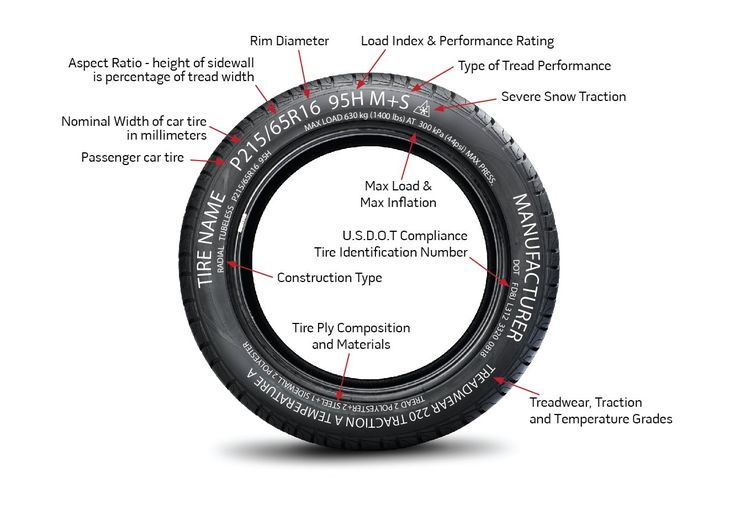 rbc.ru
rbc.ru
See also
Tires are the only vehicle element that is in constant contact with the road. One of the main indicators of their serviceability is pressure. It affects not only fuel efficiency, but also safety.
As a rule, car manufacturers recommend maintaining tire pressures between 2.0 and 2.8 bar. But in practice there are situations when it is necessary to deviate from this norm.
adv.rbc.ru
Tire pressure should be checked at least once a month, there are several ways to do this. We understand why it is so important to observe the optimal pressure indicator and what it affects.
In this story:
Tire pressure is the resistance with which air "presses" on the inner area of the rubber. Properly inflated tires will last longer, give you better ride quality and improve your driving safety. If the pressure in the tires is too low or they are pumped over, then the car owner runs the risk of facing a number of problems: from buying new tires to the threat of an accident.
Properly inflated tires will last longer, give you better ride quality and improve your driving safety. If the pressure in the tires is too low or they are pumped over, then the car owner runs the risk of facing a number of problems: from buying new tires to the threat of an accident.
Properly inflated tires will last longer (Photo: Global Look Press)
Under-inflated tires are tires that are below the recommended pressure. In this case, the contact patch of rubber with the road increases, which leads to increased friction or rolling resistance. A worn out outer edge of the tread can visually give out such a problem.
Increased friction with the road can cause the tire to overheat, slip and even burst. In addition, low tire pressure leads:

When tires are over-inflated, that is, above the manufacturer's recommended rate, the contact patch decreases. As a result, the main friction with the road is taken over by the central part of the tire.
Excessive tire pressure leads to excessive sensitivity to road irregularities and the risk of tire damage, even destruction. Overinflated tires also cause the following:
Tatyana Eliseeva, an auto expert, international master of sports in motorsport, comments
For flat tires:

For overinflated tyres:
Excessive tire pressure leads to excessive sensitivity to road irregularities and the risk of tire damage (Photo: Shutterstock)
For each car model, the manufacturer sets its own optimal tire pressure. This indicator depends on the mass of the car, the speed of operation, the number of passengers (partial or full boarding), as well as the load on the trunk [1].
The recommended tire pressure can be found in the vehicle owner's manual or on one of the plates/stickers in the passenger compartment. They can be:
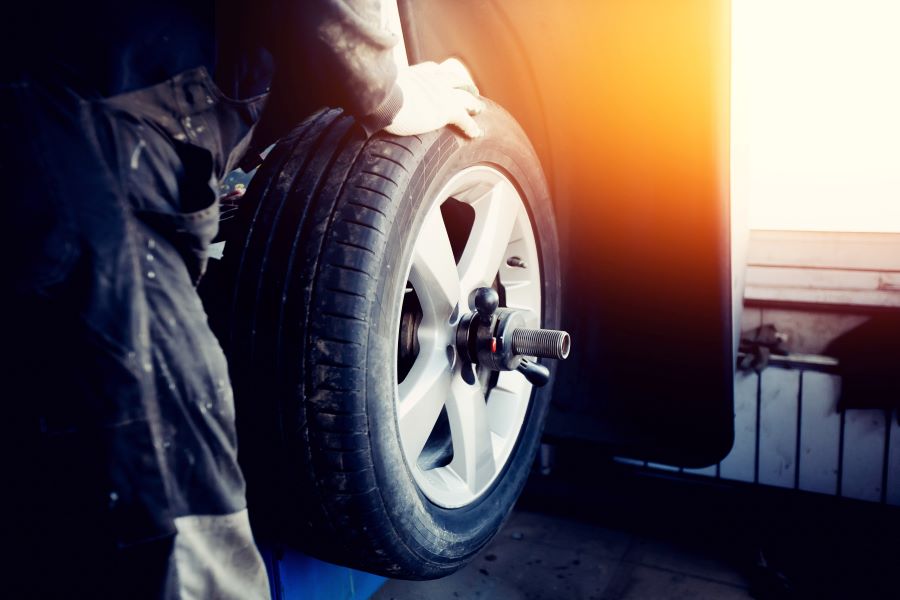
Tire pressure is measured in several units. In Russia, they usually indicate in kg / cm 2 (or atmospheres) and bars (bar). These two indicators are almost equal, which is why they are often used as synonyms:
Foreign models often use pounds per square inch (pound per square inch), or psi:
For convenience, car manufacturers can indicate pressure in two units at once - bar and psi. Thus, the need to independently calculate according to the formulas disappears. Otherwise, you can do this in one of the online calculators or check the table of popular values.
| 2.0 bar | 2.1 bar | 2.2 bar | 2.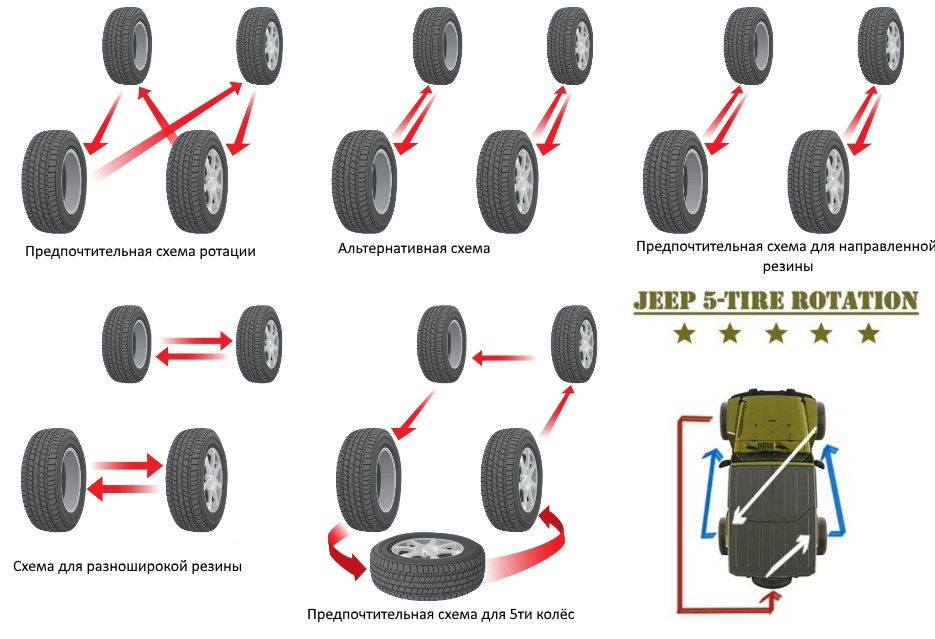 3 bar 3 bar | 2.4 bar | 2.5 bar | 2.6 bar | 2.7 bar | 2.8 bar |
| 29psi | 30psi | 32 psi | 33 psi | 35 psi | 36 psi | 38 psi | 39 psi | 41 psi |
Temperature has a significant effect on tire pressure: when it drops, the pressure in the wheels decreases with it. When the temperature drops by 10 °C, the tire deflates by an average of 0.07–0.14 bar or 1 to 2 psi [2].
Temperature has a significant effect on tire pressure (Photo: Shutterstock)
Summer tires typically use manufacturer's recommended readings. But in winter, it is advised to add about 0.2 bar to these figures [3].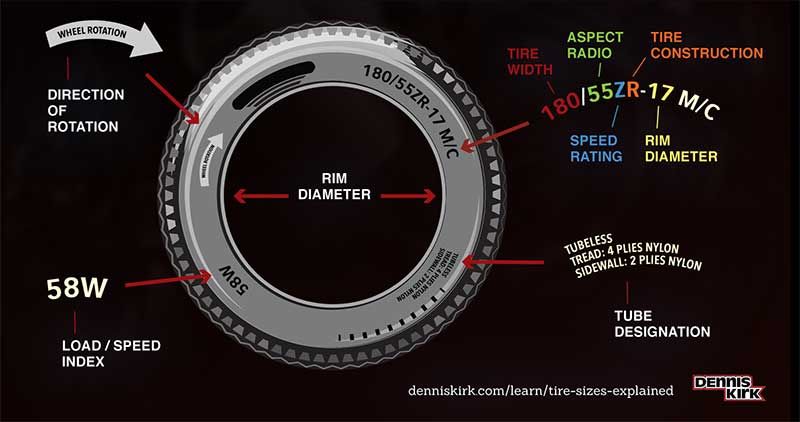
Experts also recommend checking and correcting tire pressure at outside temperature. In the cold season, swapping is best done not in a warm garage, but on the street. In summer, before such a manipulation, you should make sure that some of the wheels of the car were not under the scorching sun, while others were in the shade.
Sometimes the tire pressure needs to be adjusted according to the situation. For example, when the machine is fully loaded or a trailer is towed. For such cases, automakers, as a rule, separately indicate the optimal pressure.
But there are moments that fall into the category of extreme and non-standard (especially if before that the car most often drove around the city). Automotive expert Tatyana Eliseeva analyzed the most common of them.
Causes tires to heat up, especially in summer, so you should follow the manufacturer's recommendations before such a trip.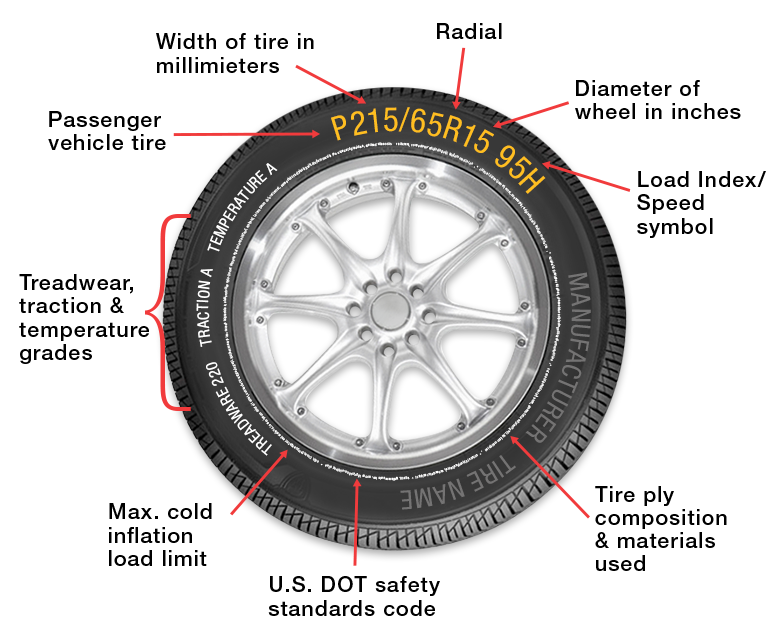 We do not know what we will meet: patched road repairs or heavy rain. After all, for each of these situations, the recommendations will be opposite. Athletes can play with pressure when track conditions are known and engineers can always change the settings. For a long journey, the layman just needs to choose the average.
We do not know what we will meet: patched road repairs or heavy rain. After all, for each of these situations, the recommendations will be opposite. Athletes can play with pressure when track conditions are known and engineers can always change the settings. For a long journey, the layman just needs to choose the average.
Tires must be bled off, especially on sand. The question is for how much? You can bleed up to 0.7 atm, but a not very experienced motorist can slip the wheels with an inaccurate movement, and if the driver turns the steering wheel sharply (for example, trying to catch on the edge of the track), then the tire can come off the disk. And such cases occur regularly.
At near-zero temperatures on packed snow, ice or sludge for new wheels (Velcro or studded) it is better to pump the wheels a little so that water and sludge are squeezed out of the central zone of the contact patch and the tread is better worked. The wheel must be cleared for the tread to work. When it is clogged with snow, the braking distance and traction deteriorate greatly.
The wheel must be cleared for the tread to work. When it is clogged with snow, the braking distance and traction deteriorate greatly.
If the car has worn wheels, but with an acceptable tread depth for winter tires (4 mm), then you should not hope for the correct operation of the tread. Such a low checker no longer pushes the snow. In this case, it is necessary to reduce the pressure in the wheel, thereby increasing the same contact patch.
Photo: Global Look Press
On a country road, the weight of the machine will be an important factor. In this case, we select the pressure according to the load - specific indicators must be viewed on the central pillar of the body. There you will see something like the following recommendation: the more the car is loaded, the higher the pressure in the rear wheels should be.
But a badly broken road can lead to herniations, ruptures and tire damage. Therefore, if we increase the pressure, then we drive on a bad road as calmly and measuredly as possible. Or we slightly deviate from the manufacturer's recommendations and raise the pressure not as much as the manufacturer recommends.
Or we slightly deviate from the manufacturer's recommendations and raise the pressure not as much as the manufacturer recommends.
The main factor in changing the behavior of the wheel is not the pressure drop at altitude, but the presence of a large number of tight turns and long braking. The tire will heat up not only from the loads, but also from the operation of the brake mechanisms. Therefore, the idea that due to low pressure it is necessary to increase the pressure in the tires is wrong, because the temperature of the wheel has a much greater influence in this case.
The recommended pressure is always given when the tires are cold. This means that the vehicle has not been driven for three hours or has traveled less than 1 mile (or one mile).
There are two ways to check tire pressure: on your own or at a workshop. In the first case, it is enough to use a public pump at a gas station or purchase a pressure gauge.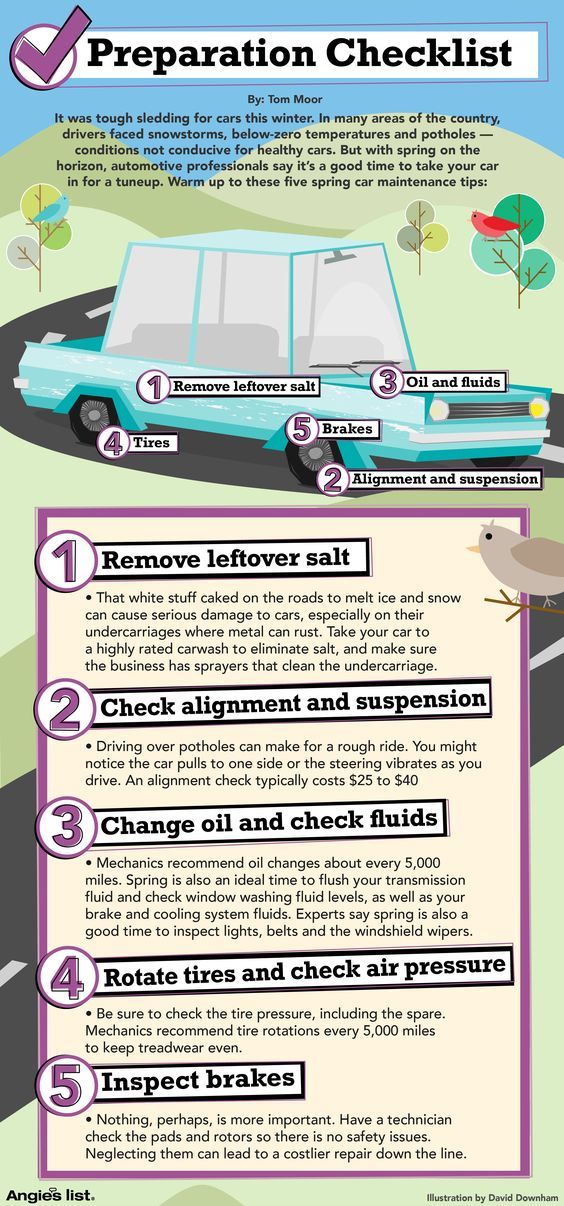 This tire pressure measuring device comes in three types:
This tire pressure measuring device comes in three types:
Another option is to install special pressure control caps on each nipple. Such a gadget works as follows: the upper part of the cap is transparent and, depending on the level of pressure, an indicator of three colors appears in it. Green - the pressure is normal, yellow - the tire is flat, red - the pressure has exceeded the norm.
Photo: Shutterstock
The easiest way to monitor tire pressure is with the automatic TPMS (Tire Pressure Monitor System). Today it is installed on almost all models, and in some countries its presence is a prerequisite for releasing a car from the assembly line.
In these systems, the electronics automatically detect changes in the tire, and if the pressure drops below the recommended value, a warning signal lights up on the on-board computer screen.
There are two types of TPMS:
Car manufacturers recommend checking tire pressure every two weeks, but at least once a month. Indeed, even under ideal conditions (for example, the car is idle for a long time), the wheels lose approximately 0.069bar, or 1 psi, per month [4].
The pressure should be monitored before and after a long trip, during a sudden change in temperature (for example, during the first frost or warming), and also after changing tires or driving with a load.